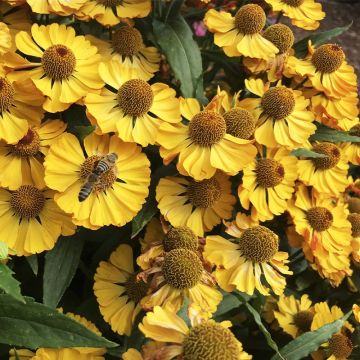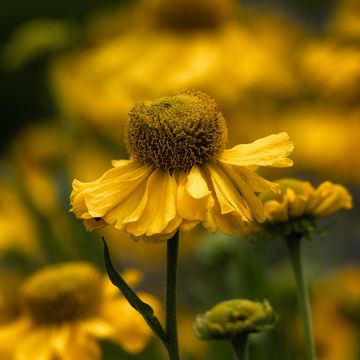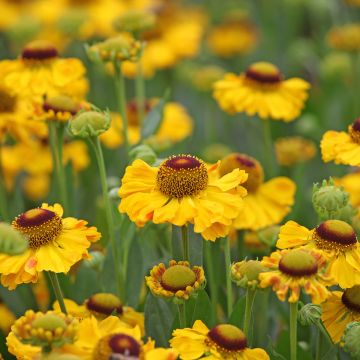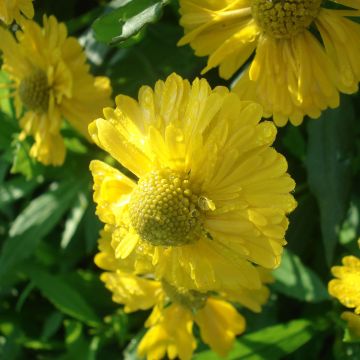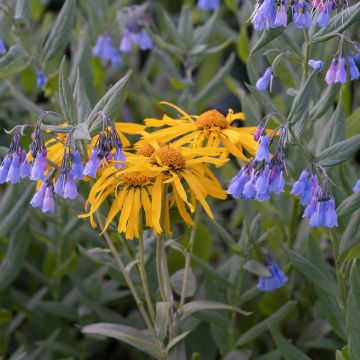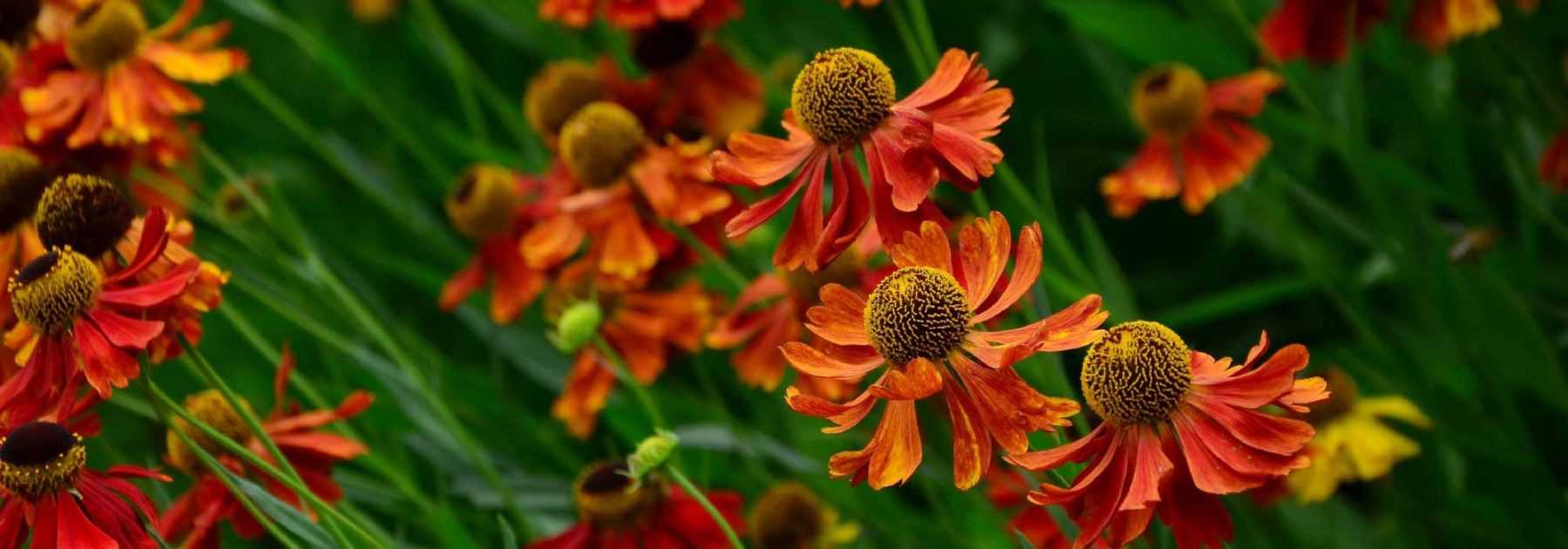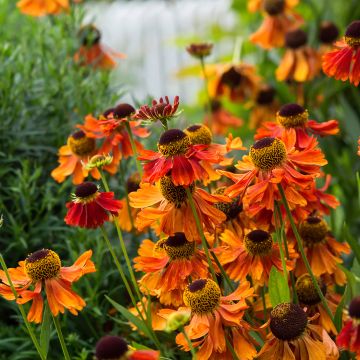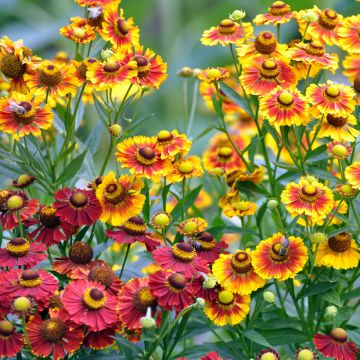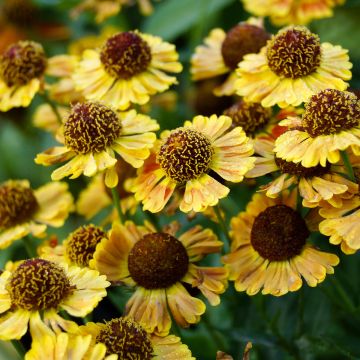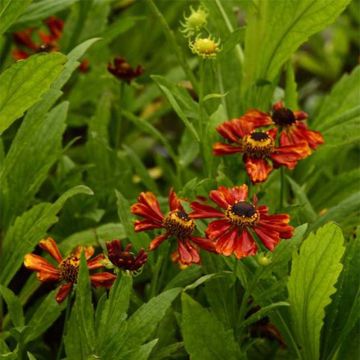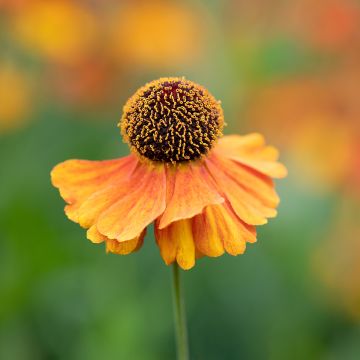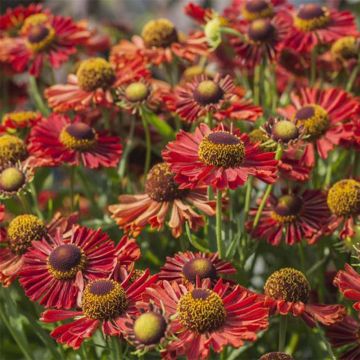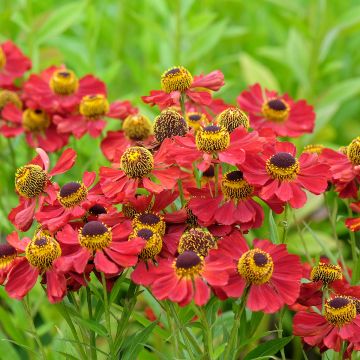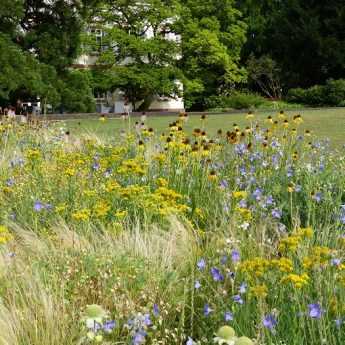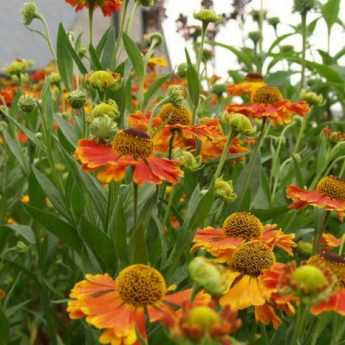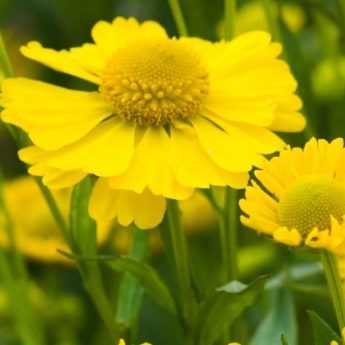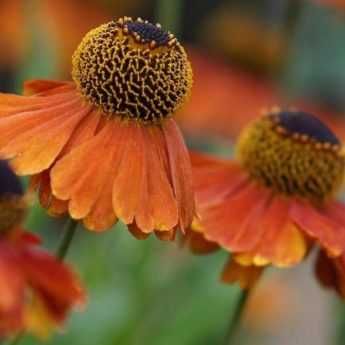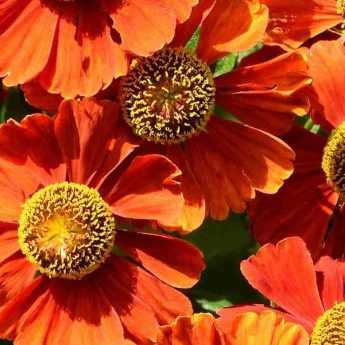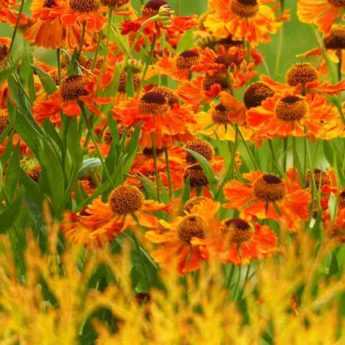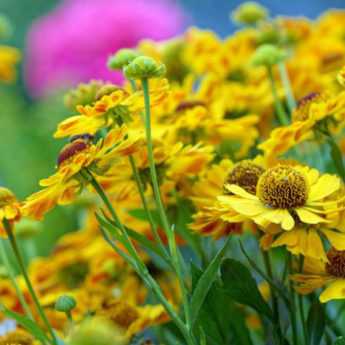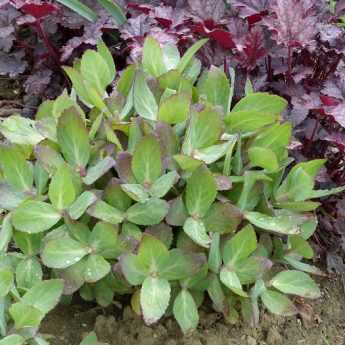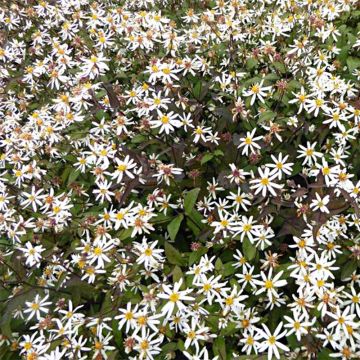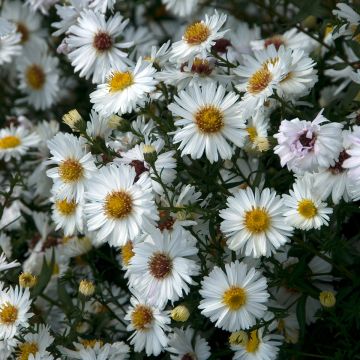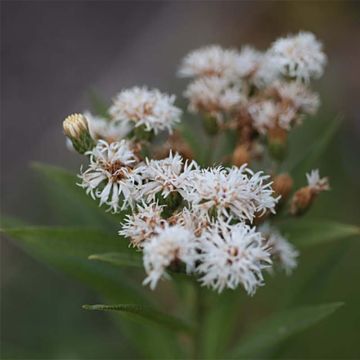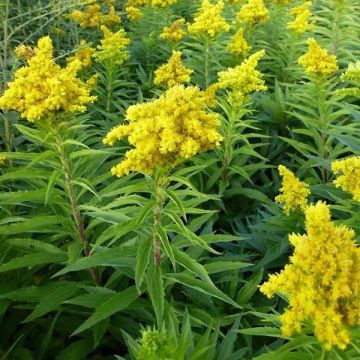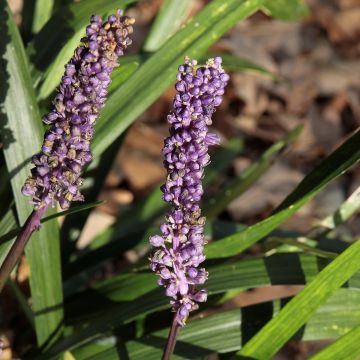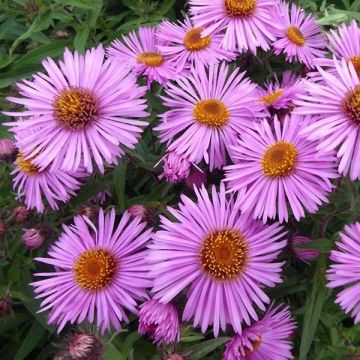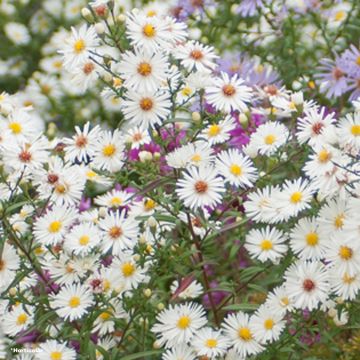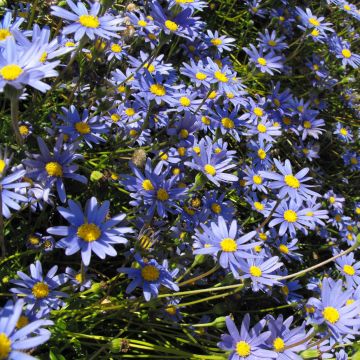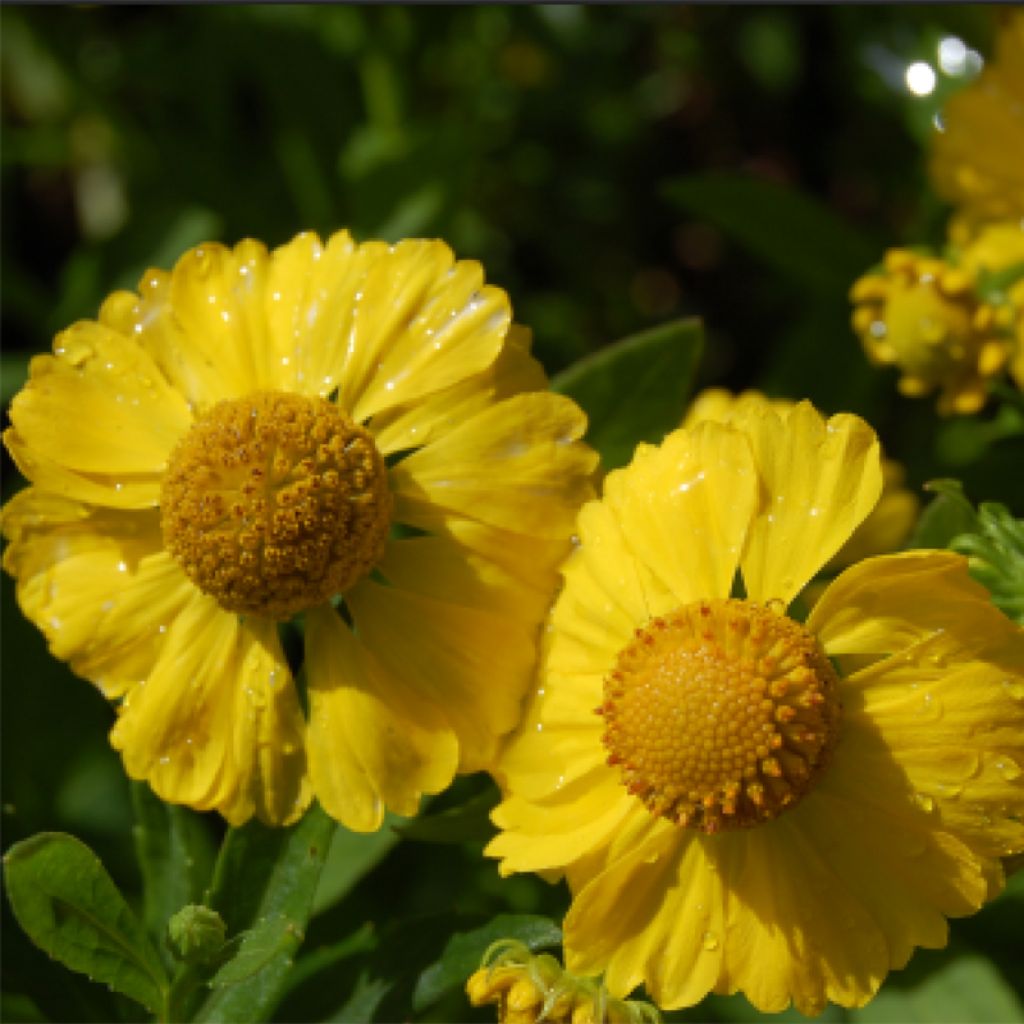

Helenium Kugelsonne - Hélénie jaune
Helenium Kugelsonne - Hélénie
Helenium Kugelsonne
Hélénium, Hélénie, Marguerite d'automne
Comme il est normal à cette époque, la plante est presque dépourvue de feuillage, il n'y a qu'une motte de racines. J'espère qu'il reviendra au printemps.
Jaime, 29/11/2022
Craquez pour d'autres variétés similaires en stock
Voir tout →Garantie de reprise de 12 mois sur cette plante
Plus d'infos
Nous garantissons la qualité de nos plantes durant un cycle végétatif complet.
Nous remplaçons à nos frais toute plante n'ayant pas repris dans des conditions climatiques et de plantation normales.
A partir de 7,90 € pour une livraison en relais et 6,90 € pour une livraison à domicile
Livraison express à domicile en 24-48h: 8,90 €.
Cette plante est-elle adaptée à mon jardin ?
Je crée mon profil Plantfit →
Description
L'Helenium' Kugelsonne' est une très haute variété d'hélénie qui offre de grandes fleurs en forme de marguerites entièrement jaune vif. Le coeur de la fleur, bombé et proéminent, est jaune également. Cette vivace fleurit d'août à octobre, permettant de réaliser de magnifiques bouquets en fin de saison. Au jardin, elle sublime les masses fleuries des asters. Les hélénies, en général, sont des plantes rustiques et facile à cultiver au soleil, en sol frais.
Les héléniums sont des vivaces originaires d’Amérique du Nord, où on les trouve généralement au bord des marécages. Le cultivar hybride 'Kugelsonne' est doté d'un coloris très uniforme et d'une végétation vigoureuse. Il possède un port dressé aux tiges atteignant les 1,50 m de haut. Les feuilles colorées d’un vert franc, de forme lancéolée et à marge lisse sont disposées de manière alterne le long des tiges. Durant les moisd'août à octobre, une myriade de fleurs apparait au sommet des tiges. Les capitules évoquent de grandes marguerites de 7 cm de diamètre, au centre, le cône coloré jaune vert, laisse place progressivement à des étamines jaunes. A la périphérie, des fleurons colorés de jaune vif et clair sont nombreus, et disposées en corolle bien ouverte. Les tons solaires de cette floraison illuminent les floraisons et les feuillages d’automne.
L’Helenium 'Kugelsonne' est une plante robuste, bien rustique et jamais malade. Il apprécie les sols ordinaires et les expositions ensoleillées. De culture facile, il fleurit les fonds de massifs. Malgré toutes ces qualités, les hélénies demeurent rares dans les jardins. Peut-être parce que leurs tons chauds annoncent l'automne un peu vite; elles sont pourtant le complément idéal des asters. 'Kugelsonne', en association à des variétés rouges comme H.'Moerheim Beauty' ou pourpre comme H.'Bruno', se marie aussi très bien avec des plantes automnales comme les heuchères, mais il peut également être installé à côté d'un fusain caduc dont le feuillage s'embrase aux premiers froids, ou de la vigne des teinturiers. Dans une autre ambiance les feuillages feutrés des stachys ou des sauges valorisent beaucoup la teinte chaude de cette floraison.
Helenium Kugelsonne - Hélénie en images...
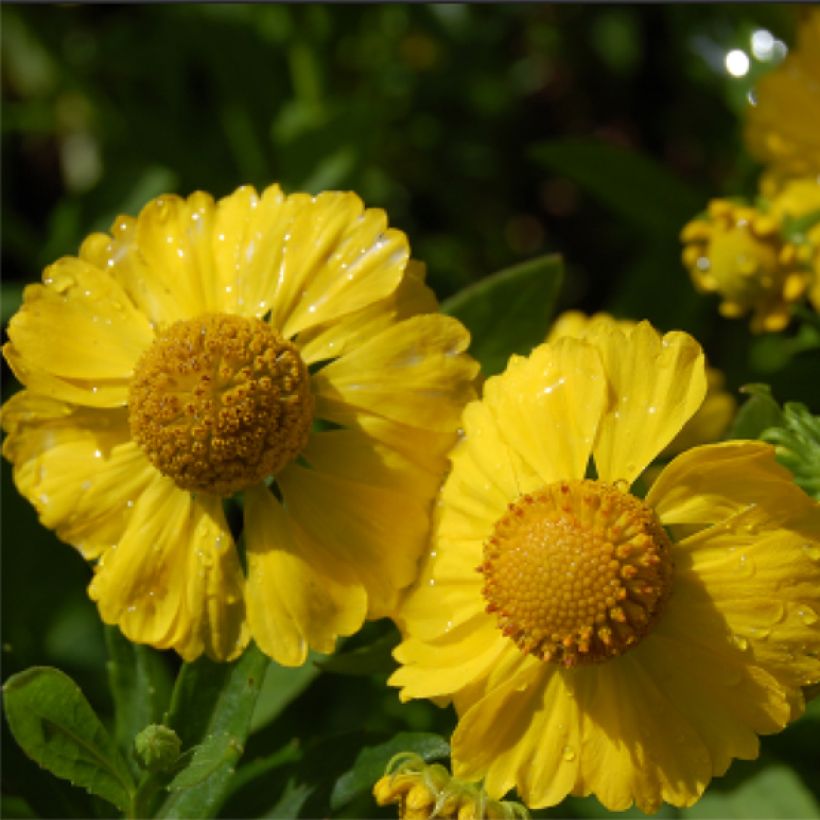

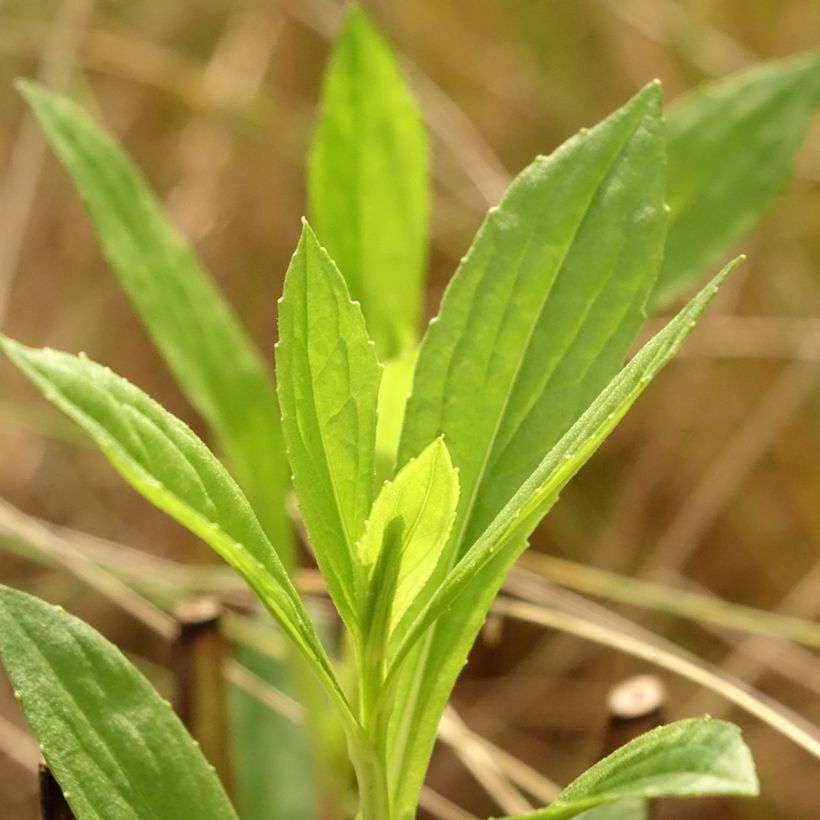

Floraison
Feuillage
Port
Botanique
Helenium
Kugelsonne
Asteraceae
Hélénium, Hélénie, Marguerite d'automne
Horticole
Autres Helenium
Plantations et soins
Plantez l’Helenium 'Kugelsonne' en sol ordinaire pourvu qu'il soit drainé en y apportant du terreau de plantation et/ou du compost bien décomposé. Choisissez-lui une exposition ensoleillée. Arrosez régulièrement après la plantation, puis une fois installée, n'arrosez qu'en cas de sécheresse prolongée. Cette variété particulièrement haute devra beneficier d'un tuteurage. Rabattez la plante une fois que les tiges ont noirci. Tous les 2 à 3 ans, vous pouvez diviser la touffe au printemps ou à l’automne afin de régénérer la plante et lui redonner de la vigueur.
Quand planter ?
Pour quel endroit ?
Soins
Nos conseils plantation et soins
L'entretien des vivaces : le "Chelsea Chop" ou l'art de pincer
notre spécialiste
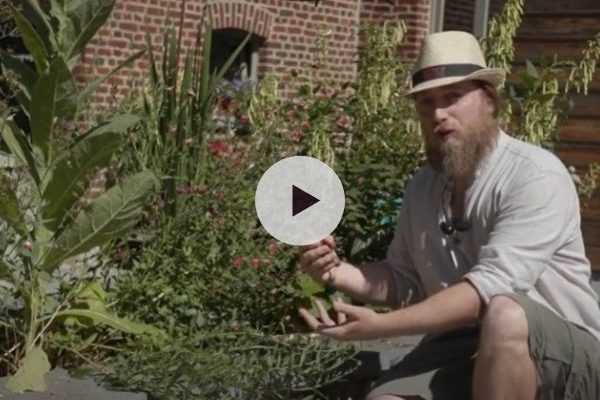
Vivaces à floraison tardive
Vous n'avez pas trouvé votre bonheur ?
La rusticité est la température hivernale la plus basse qu'une plante puisse endurer sans subir de dommages sérieux, voire mourir. Cette rusticité est toutefois affectée par l'emplacement (zone abritée, comme un patio), les protections (voile d'hivernage) et le type de terre (la rusticité est améliorée par un sol bien drainé).

Conditions Générales d'Utilisation du Service Photos Client
Dans le but de favoriser l’interaction et le partage d'expériences entre jardiniers, Promesse de fleurs propose différents services permettant le dépôt de contenus sur son Site – via notamment le module « Partage de photos».
L’Utilisateur s’interdit de:
- Publier tout contenu illégal, préjudiciable, injurieux, raciste, incitant à la haine, révisionniste, contraire aux bonnes mœurs, portant atteinte à la vie privée ou portant atteinte aux droits privatifs de tiers, notamment le droit à l’image des personnes et des biens, le droit de propriété intellectuelle ou le droit au respect de la vie privée
- Déposer des contenus pour le compte d’un tiers
- Usurper l’identité d’un tiers et/ou publier toute information personnelle d’un tiers
D'une manière générale, l’Utilisateur s’engage à s’abstenir de tout comportement contraire à l’éthique
L’ensemble des Contenus (notamment textes, commentaires, fichiers, images, photos, vidéos, œuvres, etc… ), éventuellement soumis à des droits de propriété, propriété intellectuelle, droit à l’image ou autre droit privatif restent la propriété de l’Utilisateur, sous réserve des droits limités accordés par la licence définie ci-dessous à Promesse de fleurs. Les Utilisateurs sont libres de publier ou non de tels Contenus sur le Site via notamment le service « Partage de photos » et acceptent que ces Contenus deviennent publics et librement accessibles notamment sur Internet.
Ils reconnaissent, s’engagent et garantissent disposer de l’ensemble des droits et autorisations nécessaires pour une telle publication sur le Site, notamment au titre de la législation en vigueur et des droits au respect de la vie privée, de propriété, de la propriété intellectuelle, à l’image, des contrats ou de toute autre nature. Par une telle publication sur le Site, les Utilisateurs ont conscience d'engager leur responsabilité en tant qu'éditeur du Contenu au sens de la loi, et accordent sur le dit Contenu, pour toute la durée de publication, à Promesse de fleurs, une licence non exclusive, gratuite, mondiale, incluant les droits de reproduction, de représentation, de chargement, d’affichage, d’exécution, de transmission, de stockage.
Les Utilisateurs autorisent également que leur nom puisse être associé au Contenu et acceptent que cette association ne soit pas toujours faite.
Par leur publication, les Utilisateurs autorisent qu'un Contenu puisse devenir automatiquement accessible sur internet, notamment sur d'autres sites et/ou blogs et/ou pages web du site Promesse de fleurs incluant notamment les pages des réseaux sociaux et le catalogue de Promesse de fleurs.
Les utilisateurs peuvent librement obtenir le retait des contenus confiés, en contactant le service client via le formulaire de contact

































